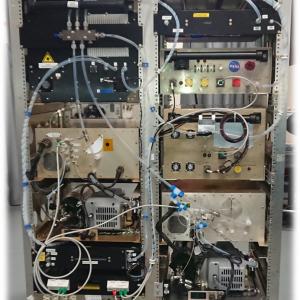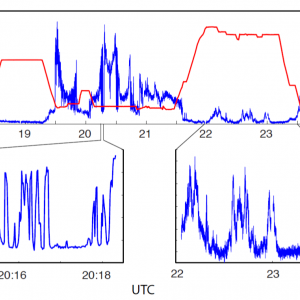Primary tabs
Disclaimer: This material is being kept online for historical purposes. Though accurate at the time of publication, it is no longer being updated. The page may contain broken links or outdated information, and parts may not function in current web browsers. Visit https://espo.nasa.gov for information about our current projects.
In Situ Airborne Formaldehyde (ISAF)
Status
In situ measurements of HCHO are shown for the flight of 2 June on the NASA DC-8 during the Deep Convective Clouds and Chemistry (DC3) campaign in 2012. The top shows 1 s HCHO and GPS altitude. The lower portions are expanded views of the boundary layer (BL) leg and the upper tropospheric (UT) leg. The fast response to large changes in ambient HCHO are evident in the BL leg. The sensitivity (better than 20 pptv/s) is evident in the UT leg.
The NASA GSFC In Situ Airborne Formaldehyde (ISAF) instrument measures formaldehyde (CH2O) on both pressurized and unpressurized (high-altitude) aircraft. Using laser induced fluorescence (LIF), ISAF possesses the high sensitivity, fast time response, and dynamic range needed to observe CH2O throughout the troposphere and lower stratosphere, where concentrations can range from 10 pptv to hundreds of ppbv.
Formaldehyde is produced via the oxidation of hydrocarbons, notably methane (a ubiquitous greenhouse gas) and isoprene (the primary hydrocarbon emitted by vegetation). Observations of CH2O can thus provide information on many atmospheric processes, including:
- Convective transport of air from the surface to the upper troposphere
- Emissions of reactive hydrocarbons from cities, forests, and fires
- Atmospheric oxidizing capacity, which relates to formation of ozone and destruction of methane
In situ observations of CH2O are also crucial for validating retrievals from satellite instruments, such as OMI, TROPOMI, and TEMPO.


